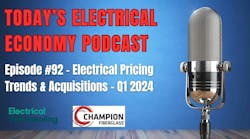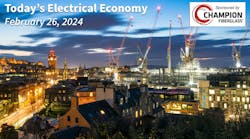Building permits rise 4.8% in October. Building permits in October were at a seasonally adjusted annual rate of 1,080,000, 4.8% above the revised September rate of 1,031,000 and 1.2% above the October 2013 estimate of 1,067,000. Single-family authorizations in October were at a rate of 640,000, 1.4% above the revised September figure of 631,000. Authorizations of units in buildings with five units or more were at a rate of 406,000 in October. The National Association of Home Builders (NAHB) said that regionally, the Northeast and Midwest registered overall permit losses of 21.5% and 11.4% respectively. The South and West posted respective gains of 8.8% and 21.6%.
October Purchasing Managers Index sees nice jump. The October PMI registered 59%, an increase of 2.4 percentage points from September’s reading of 56.6%, indicating continued expansion in manufacturing. The PMI is published monthly by the Institute for Supply Management (ISM). Any reading over 50% shows bullish sentiment from purchasing managers. The New Orders Index registered 65.8%, an increase of 5.8 percentage points from the 60% percent reading in September.
Conference Board’s Leading Economic Index looks good again in October. The Conference Board Leading Economic Index (LEI) for the U.S. increased 0.9 percent in October to 105.2 (2004=100), following a 0.7 percent increase in September, and no change in August. In a press release announcing the October data, Ataman Ozyildirim, an economist at The Conference Board, said, “The LEI rose sharply in October, with all components gaining over the previous six months. Despite a negative contribution from stock prices in October, and minimal contributions from new orders for consumer goods and average workweek in manufacturing, the LEI suggests the U.S. expansion continues to be strong.” “The upward trend in the LEI points to continued economic growth through the holiday season and into early 2015,” added Ken Goldstein, another Conference Board economist. “This is consistent with our outlook for relatively good, but not great, consumer demand over the near term. Going forward, there are continued concerns about slow business investment and lackluster income growth.”








